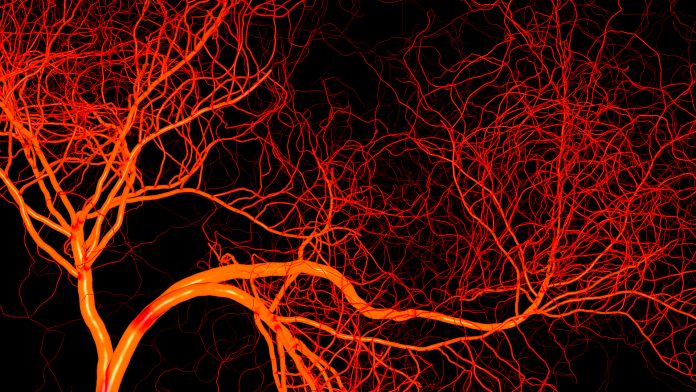NTU Singapore scientists have developed a technique to deliver electronically-activated glue for fastening defects in broken blood vessels.
A team of researchers led by Nanyang Technological University has invented a device that provides a faster and less invasive way of fastening the tears and holes in broken blood vessels by utilising an electronically-activated glue patch applied using a balloon catheter.
This new method may be able to replace the need for open or keyhole surgery to patch up or stitch together internal blood vessel defects.
Once the catheter has been implanted into the correct blood vessel, the glue patch – that has been given the nickname ‘Voltaglue’ – can be steered through the body to where the tear is situated and is then activated using retractable electrodes to glue it shut in a few minutes, without making a single surgical cut.
Voltaglue is a novel adhesive that operates in wet environments and hardens once voltage has been applied to it. The catheter device that deploys Voltaglue is the first proof-of-concept application of Voltaglue in a medical setting since it was invented by Associate Professor Terry Steele from the NTU School of Materials Science and Engineering in 2015.
Steele commented: “The system that we developed is potentially the answer to the currently unmet medical need for a minimally-invasive technique to repair arteriovenous fistulas (an abnormal connection between an artery and a vein) or vascular leaks, without the need for open surgery. With Voltaglue and the catheter device, we open up the possibility of not having to make surgical incisions to patch something up inside – we can send a catheter-based device through to do the job.”
The catheter is formed of two components: the adhesive patch containing Voltaglue called ePATCH, which is applied to the catheter’s balloon; and a modified catheter with retractable wires that carry electrical current, named CATRE.
The team performed lab experiments on a pig’s heart to test their method. The results indicated that the Voltaglue patch can be safely and effectively applied in a range of situations, including withstanding the high pulsatile pressure of blood in arteries like the aorta.
The paper’s first author Dr Manisha Singh, formerly from NTU School of Materials Science and Engineering, said: “Voltaglue is unlike other adhesives in the market as it is voltage-activated, is stable in wet environments and can stick onto soft tissue, making it suitable and effective for repairing blood vessels. By combining it with existing, commercially available catheters, we have developed a new delivery mechanism that is minimally invasive, yet flexible and adaptable. This system shows promise for a diverse range of medical applications, as the suitability of the patch could be tailored according to the needs of the patient.”
Going forward, the researchers hope that the device could one day be used to deliver patches to repair birth defects such as holes in the wall of the heart.









